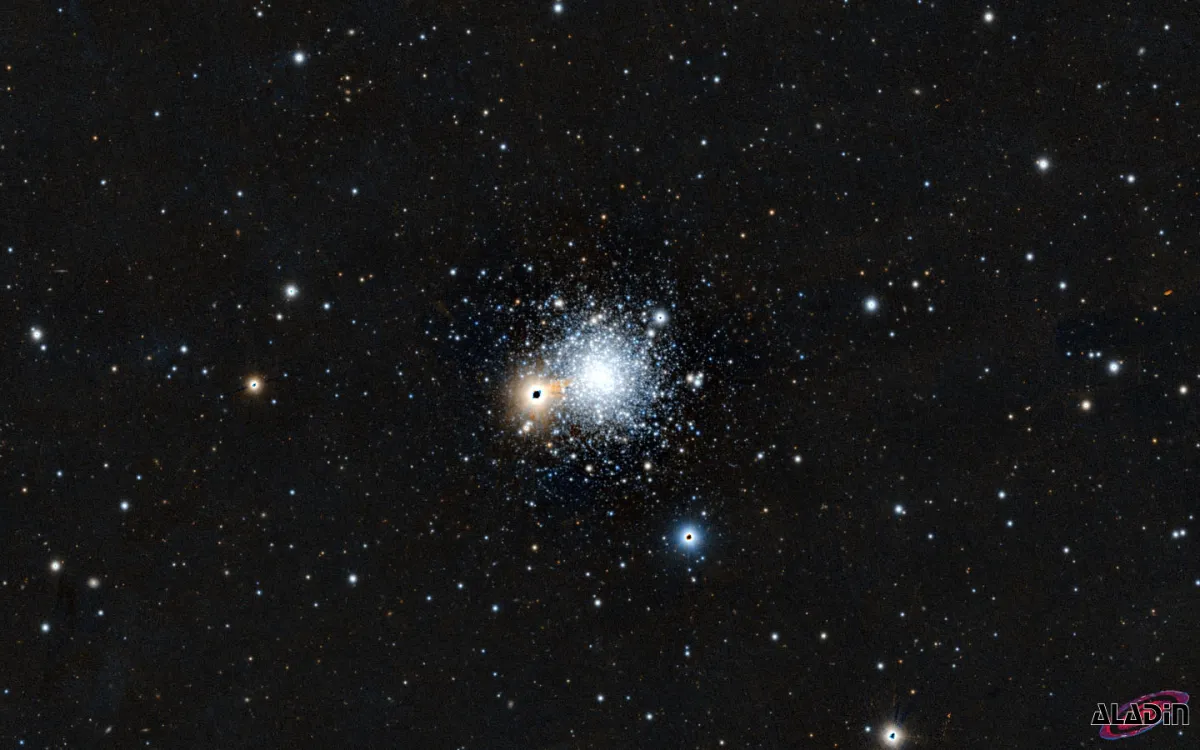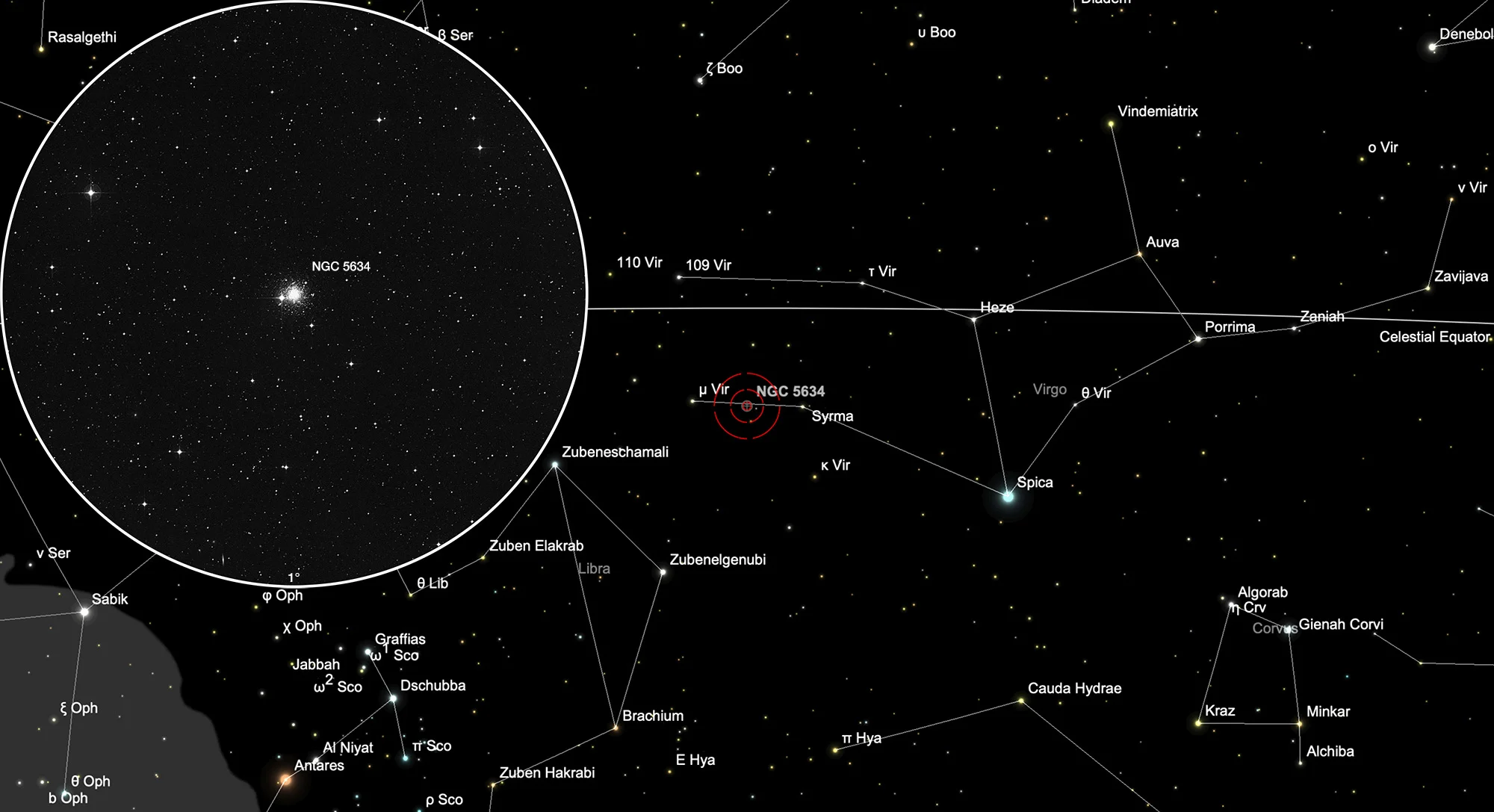Globular Cluster NGC 5634

History
In the night from 24 to 25 April 1784, William Herschel let the constellation Virgo drift through the field of view of his long 18.7-inch reflecting telescope and recorded 16 discoveries, the last one being catalogued as VI 8 with the description: «A very compressed cluster of stars 8 or 9' diameter extremely rich irregularly round or little extended» Unfortunately there was a mistake when noting the position. It happened to be the exact same from object II 190 (NGC 4928) discovered earlier the same night. (23 minutes and 44 seconds following star 26 χ Virginis and 6 minutes of arc to the south).
Approximately one year later on 5 March 1785, William Herschel crossed the same section of the sky again and found a «bright nebula» 1 minute and 2 seconds following star 106 Virginis and 54 minutes of arc north of it. He catalogued it again, this time as I 70 and added the description: «very bright, considerably large, of an irregular figure, very gradually brighter in the middle.» [463]
In 1833 John Frederick William Herschel catalogued the globular cluster as h 1813 and referred to his father's object I 70. He described it as follows: «A fine small compressed globular cluster. I can barely discern the stars; they are 19m 80" diam; has a star 7.8 m 90" dist, pos 30° s f, and another 10m n p.» [466] In his «I. Catalogue of Nebulae and Clusters of Stars» published in 1864 the globular cluster is listed as number 3900. [467] John L. E. Dreyer then added the globular cluster as NGC 5634 to his «New General Catalogue» of 1888. [313]
Physical Properties
NGC 5634 is among many galaxies the only globular cluster in the constellation Virgo. The bright orange star on the eastern edge is HD 127119 with a visual magnitude of 7.97 and spectral type K3III. It is at a distance of 580 pc, while the cluster is much further away at a distance of 25'200 pc. [145]
| Designation | NGC 5634 |
| Type | GCL (IV) |
| Right Ascension (J2000.0) | 14h 29m 37.3s |
| Declination (J2000.0) | -05° 58' 33" |
| Diameter | 5.5 arcmin |
| Visual magnitude | 9.5 mag |
| Metric Distance | 25.200 kpc |
| Dreyer Description | globular, vB, cL, R, gbM, rrr, st 19, * 8 sf |
| Identification, Remarks | WH I 70, VI 8; h 1813; GC 3900; GCL 28 |
Finder Chart
The globular cluster NGC 5634 is located in the constellation Virgo. It is easy to find because it lies pretty much in the middle between the two stars μ Virginis and Syrma (ι Virginis). The best time to observe it is December to October when it is highest at night.
